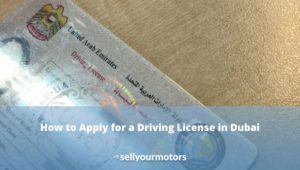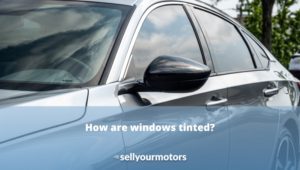Every car has its own unique identifier. From license plates, to tags on the dashboard, to VIN numbers on the exterior of the car, there are a lot of identifiers for your car. A VIN number is a 17-digit code that identifies the type of car and where it was made. It also indicates any safety issues or recalls on the car and its manufacturer. If you’re buying a used car, make sure you check the VIN number in several places before signing off on the deal. Some sellers may try to hide or falsify this information because they know that it can reveal potential safety risks and signal if the car has been recalled by manufacturers because of structural problems or software issues that could be dangerous. Here’s everything you need to know about what a VIN number is, why it’s important, and what yours should look like if you’re buying a used car
What is a VIN Number and Where Is It Located?
The VIN, or vehicle identification number, is a unique number that manufacturers put into every car. It will appear on a small, metal plate on the dash, the door frame, the floor, or on the engine. This number is like a fingerprint for your car. It tells you exactly what model car you have, where it was made, and if there are any safety concerns, recalls, or if it has been stolen. The VIN number also helps with determining the resale value of your car one day. If you’re looking to buy a used car, the VIN number will be your best friend when checking it out to make sure it’s the car you think it is, and that there aren’t any hidden issues.
Why is a VIN Number Important When Buying a Used Car?
The VIN number is the best way to check if the car you’re buying has been recalled. In some cases, the seller may not mention that the car has been recalled when selling it. This is to avoid people from not buying it or paying less for it. The seller may never even have known about the recall themselves. If you’re buying a used car, it’s important to check the VIN number for recalls to make sure you aren’t putting yourself and others in danger by driving the car. If a car has been recalled, it means that the manufacturer knows there is a problem with the car. They will have a fix for it, but it’s up to you to get it done. If you drive the car after the recall has been done, you’re putting yourself and others in danger because you don’t know if the issue has been fixed. It may be a matter of life or death.
How to Check the VIN on a Used Car Before You Buy
Before you buy a used car, you should always check the VIN number to make sure it’s not been recalled, stolen, or been in an accident. You also need to make sure it isn’t a lemon that has been reported as having a lot of mechanical issues. The best way to do this is to call the manufacturer of the car and tell them the VIN you’re checking. They will let you know if the car has been recalled, if it has been in an accident, if it is stolen, and what repairs it has needed in the past. You can also check the VIN on websites like Carfax, NADA, or Autocheck. These websites will let you know if the car has been in an accident, the current owner, and if it has been recalled. You can also learn the car’s resale value this way as well. Just make sure you’re checking the VIN on the correct car. Some dealers will try to hide the VIN of the car you’re buying so you can’t check it. Make sure you check every part of the car for the VIN to make sure you’re getting the car you think you are.
What to Look for When Checking the VIN on a Used Car
When you’re checking the VIN on a used car, there are a few things you should look for to make sure the car you’re buying isn’t a lemon. First, you want to make sure that the VIN ends in Z for a new car, and that there aren’t any letters or numbers after the Z. Anything after the Z means the car has been totaled or has been repaired after an accident. Next, you want to make sure the VIN isn’t too long. New cars usually have a 17-digit VIN. Older cars may have up to a 19-digit VIN. Anything over 17 digits is either a new car or it has been altered. Last, you want to make sure the VIN is clear and legible. If it’s hard to read or has any damage to it, that may be a sign that the car has been in an accident. If you notice any of these things, it might be best to walk away from the deal.
3 Steps to Find the VIN on Your Used Car
Now that you know what a VIN number is, and why it’s important, you’re ready to check the VIN on your used car. You’ll probably want to do this in person, although some websites will let you plug the VIN number into their site to get the results. If you’re buying the car from a dealer, they will probably have the VIN information on file. If you’re buying from a private seller, make sure you ask them to show you the VIN number in several places on the car. You can also ask them to let you call the manufacturer to check the VIN. They will want you to be sure that you’re buying the right car, so they will likely be okay with this. Here are the three steps you should follow to find the VIN on your used car: 1. Walk Around the Car – First, walk around the car and look for the VIN on the car’s exterior. You can usually find it on the door frame or on the dash, under the steering wheel, or on the engine. If you can’t find the VIN on the exterior, try the door panels. Some manufacturers will place the VIN inside the door panels for a hidden VIN. 2. Open the Hood – Open the hood and check the engine for the VIN. It will usually be near the top of the engine. Make sure the VIN is legible. If the engine is cold, the VIN will be harder to read. 3. Check the Title – Finally, check the title for the VIN. It will usually be near the top. If the VIN on the title doesn’t match the other two places, you should walk away from the deal.
What is a Vin Number: Conclusion
The VIN number is important for all car owners. It’s a unique identifier for each car made. Every car has one, and it’s usually found on the engine or the dashboard. If you’re buying a used car, the VIN number will be your best friend when checking it out to make sure there aren’t any hidden issues. The best way to check the VIN is to walk around the car, open the hood, and check the title for the number as well. It’s important to make sure the VIN on the car you’re buying matches the VIN in the title and on the engine because it will tell you if the car has been recalled.
Sell Your Motors
Car buying specialists are your best bet when you want to sell your car fast for a fair price. At Sell Your Motors we pride ourselves for being transparent and completing the whole car buying process in only 30 minutes!







